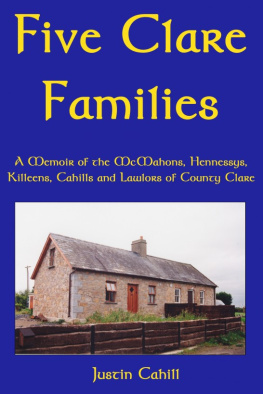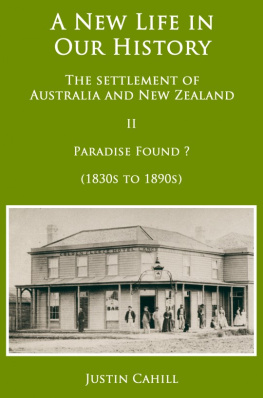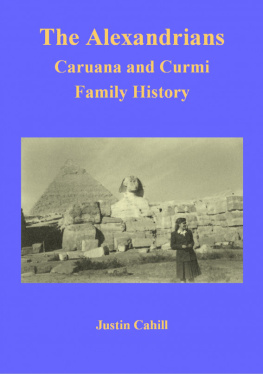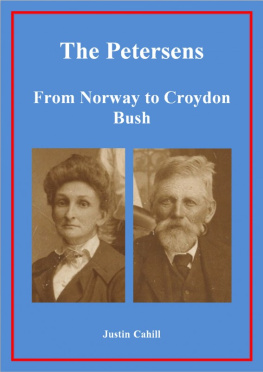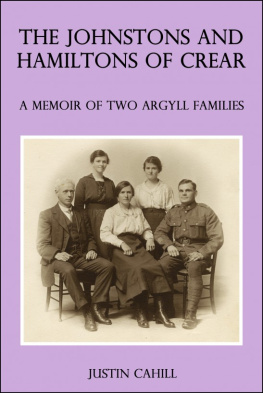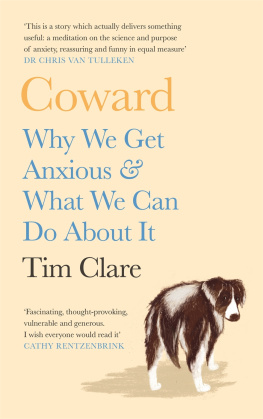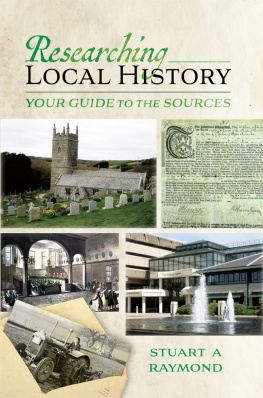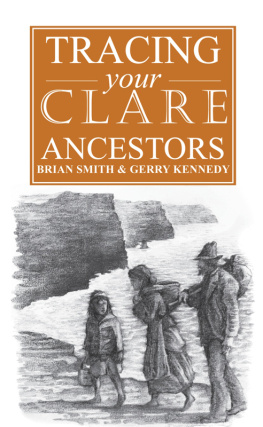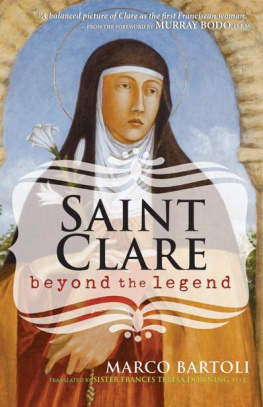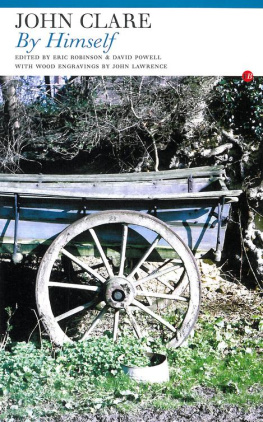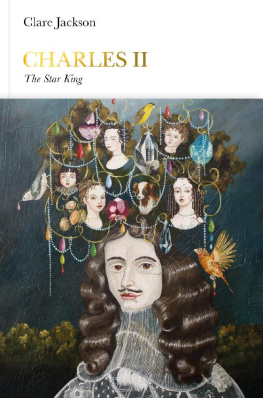Five Clare Families
A Memoir of the McMahons, Hennessy, Killeens, Cahillsand
Lawlors of County Clare
Justin Cahill
Smashwords Edition
Copyright 2014 Justin Cahill
Discover other titles by Justin Cahillat Smashwords.com
Please direct all inquiries to JustinCahill at
PO Box 108, Lindfield, 2070
New South Wales, Australia.
or e-mail to:
Cover: Photograph of the former Cahill familyhome near Grays Cross at the top of the Hill Road, near Bunratty,taken in 2000.
Introduction
i
This is a short history of my fathersfamily. He came from the southern part of County Clare, near theconfluence of the Shannon and Fergus Rivers. If you were to sailthere from the Atlantic, you would come up the Shannon, pass thetown of Kilrush and continue on to Rineanna, near where the airportis. From there, the Fergus goes north, past the town ofNewmarket-on-Fergus and on through Ennis. The Shannon continueseast, past Bunratty and to Limerick.
History seeps through the land like waterthrough a sponge. People began to arrive there after the end of thelast Ice Age. They built the famous Poulnabrone dolmen at theBurren about 5800 years ago. By the time of the earliest survivingwritten records, from the 500s, they spoke Celtic. They leftIreland a heritage of beauty in decorative art and in lyricpoetry, of incandescent imagination in literature, of devotion toideals rather than to material gain, of vitality and the will tosurvive.
From the 430s, Palladius, St Patrick andother missionaries began converting these ideals into the Christianfaith. During the Dark Ages that followed, their successors helpedpreserve Europes cultural legacy, with Ireland becoming known asthe 'Land of Saints and Scholars'.
For all these achievements, the Irishremained politically divided. Eventually, the land was split intoseveral independent kingdoms. The land along the River Shannon inClare and Limerick lay within the kingdom of Thomond, ruled by theOBrien family.
Disunity brought civil wars and invasions. In1014 Brian Boru, King of Thomond and High King of Ireland, blockedfurther Viking settlement. Then came the Normans, including Richardde Clare. They were followed by the Henry II of England. Most ofthe Irish kings submitted to him in 1171. But the OBriensgradually regained power, leaving the Normans in only nominalcontrol.
During the Reformation, Henry VIII brokeEngland away from the Catholic Church. Fearing the Catholic stateswould allay against him, he invaded Ireland. Ultimately MurroughOBrien, the last King of Thomond, was forced to submit. Henry VIIImade him Earl of Thomond and Baron Inchiquin and allowed him toretain the familys seat, Dromoland Castle, and its estates atBallynacragga. Dromoland Castle is still there, although it is nowa hotel and conference centre rather than a place ofgovernment.
From this time, the English set out tocolonise Ireland. James I dispatched settlers for the plantationof Ulster. They took most of the land, divided it into largeestates and reduced most of the Irish to landless labourers. That,and Cromwells brutal invasion, left a legacy of hatred andbitterness that lasts to this day.
Charles II returned some of the land grantedto the settlers. But the Irish hoped to throw them out altogether,only to be defeated in 1691. It was not until Daniel OConnellsecured Catholic Emancipation in 1829 that Irish Catholics becamefull citizens of their own country.
While the English took control of Ireland,they were indifferent to the fate of its people. During the reignsof Henry VIII and his Protestant successors, Catholics wereconsidered potential traitors and actively persecuted. Despitethis, most of the Irish stayed loyal to the Church - and sufferedfor it. During the Great Famine of the 1840s, this indifference andprejudice contributed to the deaths of about 1.1 millionpeople.
From this time, many of the Irish eagerlylooked for a better life overseas. Hundreds of thousands left forthe United States, Canada, Australia and New Zealand, where theyhelped build new European societies partly based on their Irishheritage.
ii
You get a sense of the relative youth ofthese new societies behind my grandmothers house by Clonlea Lake.Near the Lake stand the ruins of the parish church. Inside is aheadstone dated 1788, the year the First Fleet brought the firstEuropeans to Sydney. By then, the church was already about sixhundred years old. It is a sharp reminder that European society inAustralia is, in part, a sequel to an epic that began in anothertime and another place.
The map of south-west Clare is dotted withreminders of this distant past. There is a dolmen at Broadford,east of Clonlea. The ruins of a medieval castle stand nearKilkishen. At Quin, west of Clonlea, is a ruined friary. There is alate Bronze Age ring fort at Mooghaue North, nearNewmarket-on-Fergus. A horde of gold ornaments, including torcs andbracelets, were found nearby in 1854. What remains of a tenthcentury church still stand at Fenloe, Newmarket-on-Fergus. Thereare medieval castles at Kilmurry and Bunratty and another friary atEnnis, which was founded by the OBriens.
Other legacies of Irish history persistedwell into my fathers days. He was born into an almost feudalsociety, where most of the land was still held in large estates andthe Catholic Church dominated people's day-to-day lives. During thecenturies of English colonisation, it helped the Irish to preservetheir culture. Its word was law. There was no divorce and mixedmarriages between Catholics and Protestants were unthinkable. Untilrecently, women were still sold into marriage, with fathersmarrying their daughters off in exchange for a dowry. This happenedto one of my distant cousins when she was only 16. In 1973, herfather sold her for 2500 and a Morris Minor to an elderlyfarmer, who raped and beat her. After becoming pregnant andattempting suicide, she managed to escape to London. Her story wasthe subject of Sean Boynes book, Sold into Marriage,published in 1998. In its review, the Leinster Leaderobserved her account was a sad reminder of the closed societywhich we tolerated until very recently.
In my father's time, the Inchiquin familystill lived at Dromoland Castle. They stayed there until 1962, whenit was sold by Donough OBrien, the 16th Baron, usually referred toas Lord Inchiquin. He features in some of my fathers numerousstories about hard times in Ireland. One day, a man was caughtpoaching on the Lords estates and was brought before Inchiquin.Do you know who I am ? growled the peer. I am LordInchiquin and I own this estate. Oh said the manI thought there was just the One Lord.
There were two other large estates near wheremy father lived. The Binghams held several hundred acres atKilkishen, where the ruined castle stands. The Fitzgeralds held alarge estate at Newmarket-on-Fergus and a residence known asCarrigoran House.
iii
While Ireland has an ancient past, it can bea difficult place to research family history. Many people wereilliterate, so they left few records. Some moved around from placeto place looking for work. Many families scattered throughoutBritain, the United States and Australia in search of work, makingthem difficult to trace. The families Dad is related to were allliving in the vicinity of Newmarket-on-Fergus by 1901. But, apartfrom the McMahons, they all seem to have been recent arrivals tothe district. Many left there for other parts of Clare, Limerick,England, the United States and Australia.
Few surviving public records dealing withordinary people go back very far. The parish records forNewmarket-on-Fergus go back to 1828. Civil registration forCatholics only started in 1864, a generation after the GreatFamine. These records usually do not include details of peoplesparents, making them difficult to cross-reference. Many valuablerecords, including census returns, were lost when the PublicRecords Office at the Four Courts in Dublin was destroyed in June1922 during the Civil War. The first complete surviving census ofClare is from 1901. Many births, deaths and marriages wentunregistered and so people were often uncertain of their preciseage. Many were also illiterate and so the spelling of their namesvaried depending on who wrote it down.

